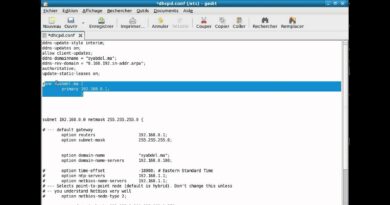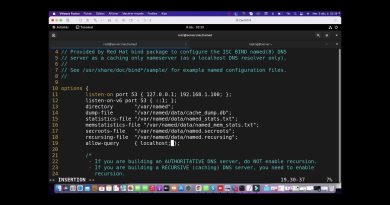Create & Manage Virtual Data Optimizer (VDO) Volume in RHEL | Nehra Classes
Create a VDO Volume On a Storage Device on RHEL 8:
++++++++++++++++++++++++++++++++++++++++++
Introduced by RedHat in RHEL 7.5 and later, VDO short for Virtual Date Optimizer is a block virtualization technology that provides inline deduplication and compression of data at a block device level. The idea of deduplication is quite simple: to remove copies of duplicate data and only remain with one copy. When an identical file is added on a block device, it is marked as a duplicate and the original file is referenced instead. In so doing, VDO helps is saving the block volume’s space.
In this tutorial, you will learn how to create a VDO volume on a storage device on the RHEL 8 system.
Step 1: Install the VDO in RHEL 8
To get started, log in to your server and update your RHEL using the dnf command.
dnf update -y
dnf install kmod-kvdo vdo
systemctl start vdo
systemctl enable vdo
systemctl status vdo
lsblk
vdo create –name=vdo1 –device=/dev/xvdb –vdoLogicalSize=300G
reboot
vdo create –name=vdo1 –device=/dev/xvdb –vdoLogicalSize=300G
create – This initiates the creation of the VDO volume.
–name=vdo1 – This gives the volume a label known as vdo1. Feel free to assign any name of your choice.
–device=/dev/xvdb – The device option specifies the disk on which the volume will be created.
–vdoLogicalSize=300G – This indicates the effective volume capacity to be used by the operating system, in this case, 300G.
ls -l /dev/mapper/vdo1
vdostats –hu
vdostats –verbose /dev/mapper/vdo1 | grep -B6 ‘saving percent’
pvcreate /dev/mapper/vdo1
vgcreate vdo1vg /dev/mapper/vdo1
vgdisplay vdo1vg
lvcreate -n vdo1v01 -L 50G vdo1vg
lvcreate -n vdo1v02 -L 50G vdo1vg
lvs
mkfs.xfs -K /dev/vdo1vg/vdo1v01
mkfs.xfs -K /dev/vdo1vg/vdo1v02
mkdir /data/v01
mkdir /data/v02
mount -o discard /dev/vdo1vg/vdo1v01 /data/v01
mount -o discard /dev/vdo1vg/vdo1v02 /data/v02
vdostats –hu
df -hT
In this tutorial, we demonstrated how you can create a VDO volume from an additional storage device on RHEL 8. We later went ahead and demonstrated how you can create more volumes and create filesystems from those volumes.
+++++++++++++
*****
Thanks for watching the video. If it helped you then, please do like & share it with others as well. Feel free to post your queries & suggestions in the comment box, we will be happy to answer your queries.
If you like our hard work then please do subscribe to our channel & turn on the bell notification to get the latest notifications of our video.
*****
Join this channel to get access to perks:
https://www.youtube.com/channel/UCvk2Fst1h1a0StSnUcvGfBQ/join
*****
My DSLR Camera: https://amzn.to/36954Ml
My Boya Microphone: https://amzn.to/3mZavTS
My iPhone: https://amzn.to/3lWa63j
My Gaming Router: https://amzn.to/3j3dQON
My FireStick: https://amzn.to/345150F
My Head-Phone: https://amzn.to/3ie4rDB
******
My Dream Laptop: https://amzn.to/37j11fp
My Dream TV: https://amzn.to/2KR32b4
My Dream IPhone: https://amzn.to/36j8oE1
******
Contact Us:
WhatsApp: https://bit.ly/2Kpqp5z
Telegram Channel: https://t.me/NehraClasses
Email: nehraclasses@gmail.com
******
Follow Us On Social Media Platforms:
Twitter: https://twitter.com/nehraclasses/
Facebook Page: https://www.facebook.com/nehraclasses/
Instagram: https://www.instagram.com/nehraclasses/
Website: https://nehraclassesonline.business.site/
=======
©COPYRIGHT. ALL RIGHTS RESERVED.
#NehraClasses #LinuxTraining #RHEL8
centos 7

-390x205.jpg)

